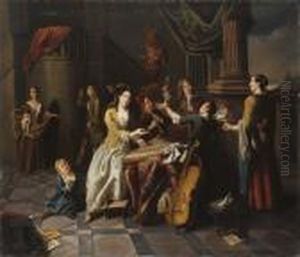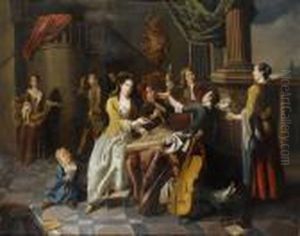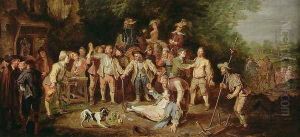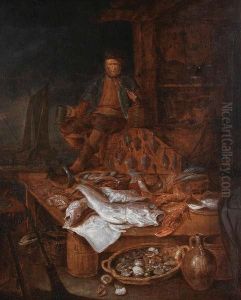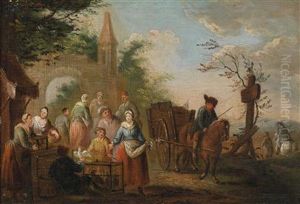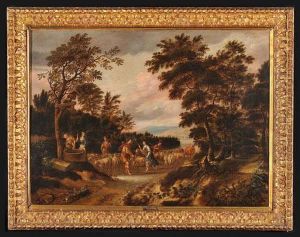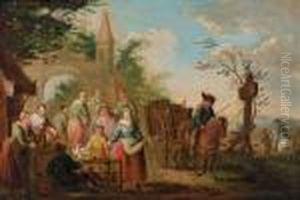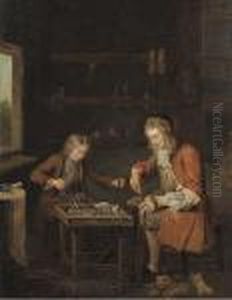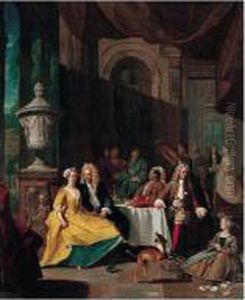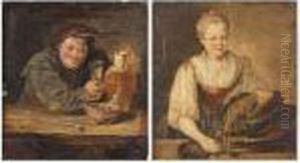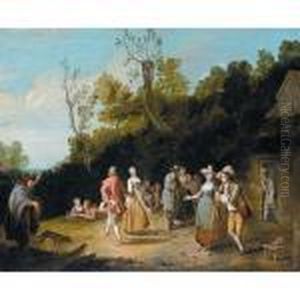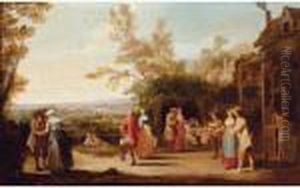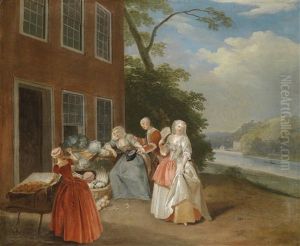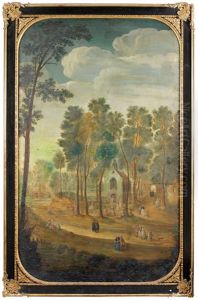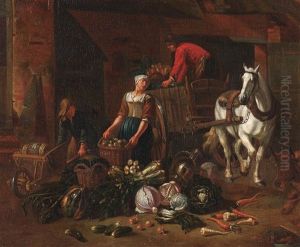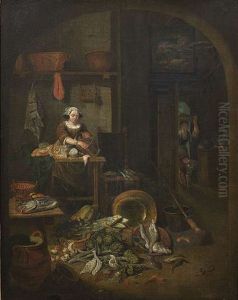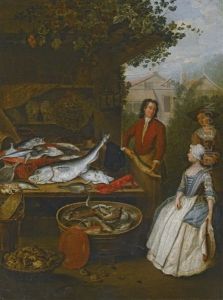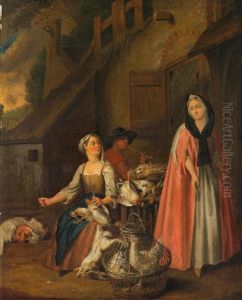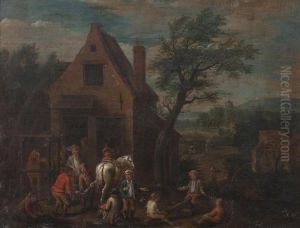Pieter Angillis Paintings
Pieter Angillis was a Flemish painter, born in 1685 in Antwerp, Belgium. He was primarily known for his works in the genres of still life and landscape painting. Angillis received his artistic training in the workshop of Peter van Boucle, who was also a still life and landscape artist, thus influencing Angillis' artistic direction.
In the early stages of his career, Angillis painted mainly still lifes, which often included musical instruments, books, and other objects arranged on tables, showcasing his skill in rendering textures and materials. His compositions were celebrated for their fine detail and the harmonious interplay of light and shadow.
As Angillis matured as an artist, he began to incorporate more landscapes into his work, which were typically adorned with classical ruins or pastoral figures. These landscapes were characterized by a serene and idyllic quality, reflecting the peacefulness of the countryside. His work in this genre was in line with the tastes of the time, which favored idealized depictions of nature.
Angillis was also influenced by the Dutch Golden Age painters, whose works were known for their meticulous attention to detail and use of light. This is evident in Angillis's paintings, which often feature a similar quality of light and attention to detail. His landscapes, in particular, show a clear inspiration from the Dutch landscapes, with expansive skies and detailed foliage.
Throughout his career, Pieter Angillis's works were collected by patrons in the Low Countries and beyond, and he enjoyed a certain degree of commercial success. Unfortunately, his life was relatively short, as he died in 1734, at the age of 49. Today, his paintings can be found in various museums and collections around the world, contributing to the understanding of Flemish art from the early 18th century.




